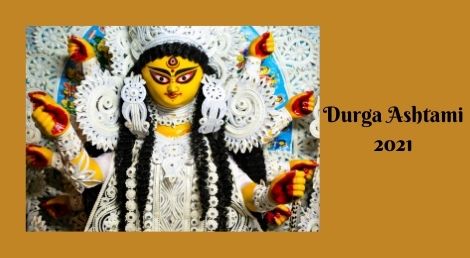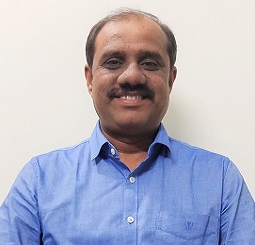Durga Ashtami 2022
Durga Ashtami 2022 - How to do Durga Ashtami Puja ?
Durgashtami is the eighth day of the Navratri or Durgotsav festival, which is observed throughout the India. This day is dedicated to the Goddess Shakti, a Durga avatar who represents eternal power and the triumph of 'good' over 'bad.'
Durgashtami is observed on the eighth day of Navratri, which begins with the Mahalaya in the Hindu month of Ashwin. The lunar phase's Shukla paksha coincides with Durga ashtami. Every year in September-October, according to the Gregorian calendar, it is commemorated.
Ashtami Tithi - Monday, 3 October 2022
Ashtami Tithi Begins - 18:46 on (2 October 2022 )
Ashtami Tithi Ends - 16:37 on (3 October 2022)
The Story of Durgashtami
On this day, Goddess Kali erupted from Devi Durga's forehead and slew Mahishasur, the Demon King, and his associates Chanda and Munda.
Mother Durga defeated Bhairo Nath, an evil 'tantric' who took the guise of Vaishno Devi, on this day. And then later on this event is claimed to have led to the foundation of the Vaishno Devi pilgrimage, and the famed Bhairo nath shrine is said to be located where Bhairo Nath's head fell after being thrown off by the Goddess in that fiercy combat.
Alternative names of Durgashtami
Mahaashtami is the name given to Durgashtami, which is part of the Navratri celebration.
Rituals of Durgashtami
On this auspicious day, Goddess Durga’s devotees observe a fast that lasts entire day.
On this day, Goddess Durga worships all of the weapons and artillery that she used to defeat Mahishasur, as well as the magical mantras. Astra puja is the name given to this rite.
Experts demonstrate a variety of weapons, guns, and martial art calibres on this day, which is also known as Virashtami.
Brahmani, Indrani, Vaishnavi, Varahi, Narasinghi, Kameshwari, Maheshwari, and Chamunda are among the Ashtanayikas, or Durga's eight avatars, who are adored during the Mother's worship.
Goddess Durga is worshipped by installing a 'ghat' in front of the temple, and red sandalwood paste, fruits, flowers, sweets, betel leaves, cardamom, and cash are distributed among the family members.
A lighted lamp is shown to the Goddess seven times, and the specific Durga Satshati mantra is recited 108 times.
Along with the Devi, 64 Yoginis who are considered her associates are also adored.
On this day, various minor deities and Mother's guardians, such as Bhairava, are also honoured. Goddess Gauri is the name given to the deity on this day. Nine small virgin girls are worshipped, their feet are bathed, and halwa (a sweet dish comprised of semolina, milk, ghee, and almonds), puri, and kheer are served as part of the ritual.
Several temples dedicated to the deity hold large-scale pujas and 'havans,' which attract a significant number of devotees.
Durgashtami comes to a close with the sandhi puja, which ushers in Mahanavami the next day.
People who keep a strict fast on this day to satisfy Mother Durga are said to be protected by her generosity and to be free of all kinds of delusions throughout their lives.
Masik Durga Ashtami
On the day of Ashtami Tithi (eighth day) of the Shukla Paksha, the Masik Durgashtami Vrat is observed month after month (bright half of the lunar month). This is a day-long fast that starts in the morning and ends in the evening. The day begins with a traditional puja to the Mother Durga, as instructed by the sacred scriptures. This is one of the most common types of vrats in the Hindu tradition, and it is believed to give Mother Durga's ultimate blessings.
People worship the eight incarnations of the Goddess Durga with tremendous devotion on the special day of Durgashtami. Kheer, Halwa, and other meals are particularly prepared at home and served to the Mother Durga during the puja. Worshipping a young girl child representing Mother Durga's nine forms is a typical ritual in the Durgashtami puja tradition. In order to appease Mother Durga, the chosen girl is offered Halwa Puri and dakshina at the puja.
The eighth manifestation of Mother Durga, the Maha Gauri, is honoured during the Durga Puja. This is one of Durga's most kind and appealing forms, which has emerged specifically to bless all the devotees and relieve them of their pains and all problems. As a result, those individuals who follow the Masik Durgashtami protocols with care have garnered immense benefits, as promised in the scriptures, making this fast extremely popular.
A Ghat, or holy pot, is placed on an altar in a customary puja setup. A copper pot is usually recommended for this, but other options such as panchaloga (a five-metal combination), silver, or clay pots are also acceptable depending on availability. Water and spices are placed inside the Ghat, and mango leaves and coconut are placed on top of it with the face pointing downwards. On the coconut or the Ghat, a picture of Mother Durga is put.
While reciting the sacred names of the Mother Gauri, the vrat observer should take flowers in both hands and offer them to the idol of Mother Durga. This procedure brings Mother Durga's Shakti into the Ghat setup. The puja includes a holy bath for the statue as well as sixteen other sorts of offerings. The most essential component of this puja is panchamrit, a salad comprised of five ingredients: curd, milk, honey, cow's ghee, and sugar. Fruits, dry fruits, and resins, betel leaves and nuts, cloves, and cardamom are all common offerings. Arti, or the seven times waving of camphor, is performed at the completion of the puja.
The puja concludes with the invitation of 9 small girls, the washing of their feet with holy water, and the performance of puja for them with offerings. After all of this, the day-long fast seeking Mother Durga's blessings is accomplished.
-
Talk to Astrologer On Call
Starting from 12 per minute only
-
Get Detailed Manual Report
Starting from 250 only
-
Read Article
Read Astrology Articles
- Vedic Astrology,...
- Exp - 12 Years
- English, Hindi
- K.P. Astrology, V...
- Exp - 25 Years
- English, Hindi
- Vedic Astrology
- Exp - 25 Years
- English, Hindi



